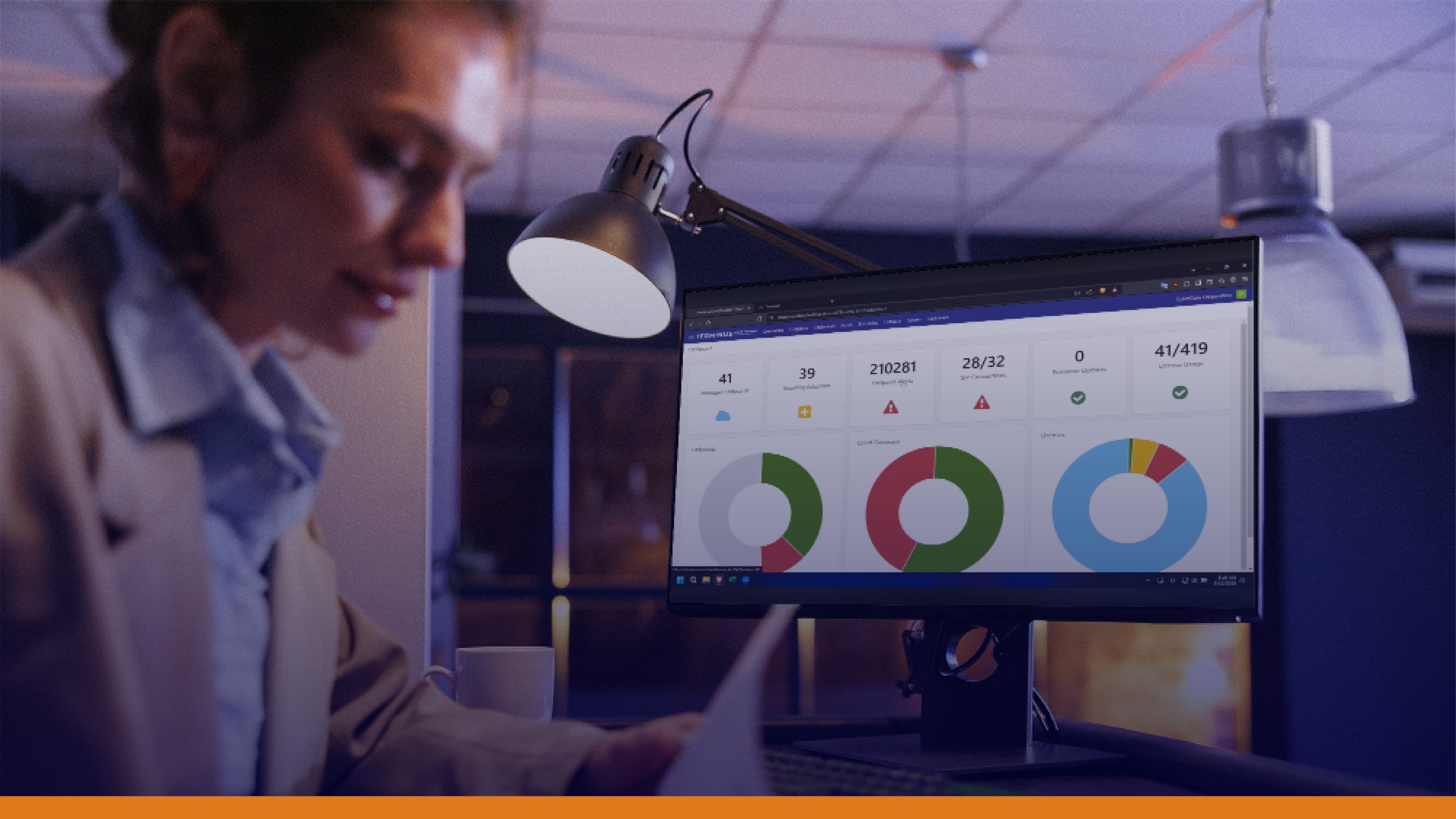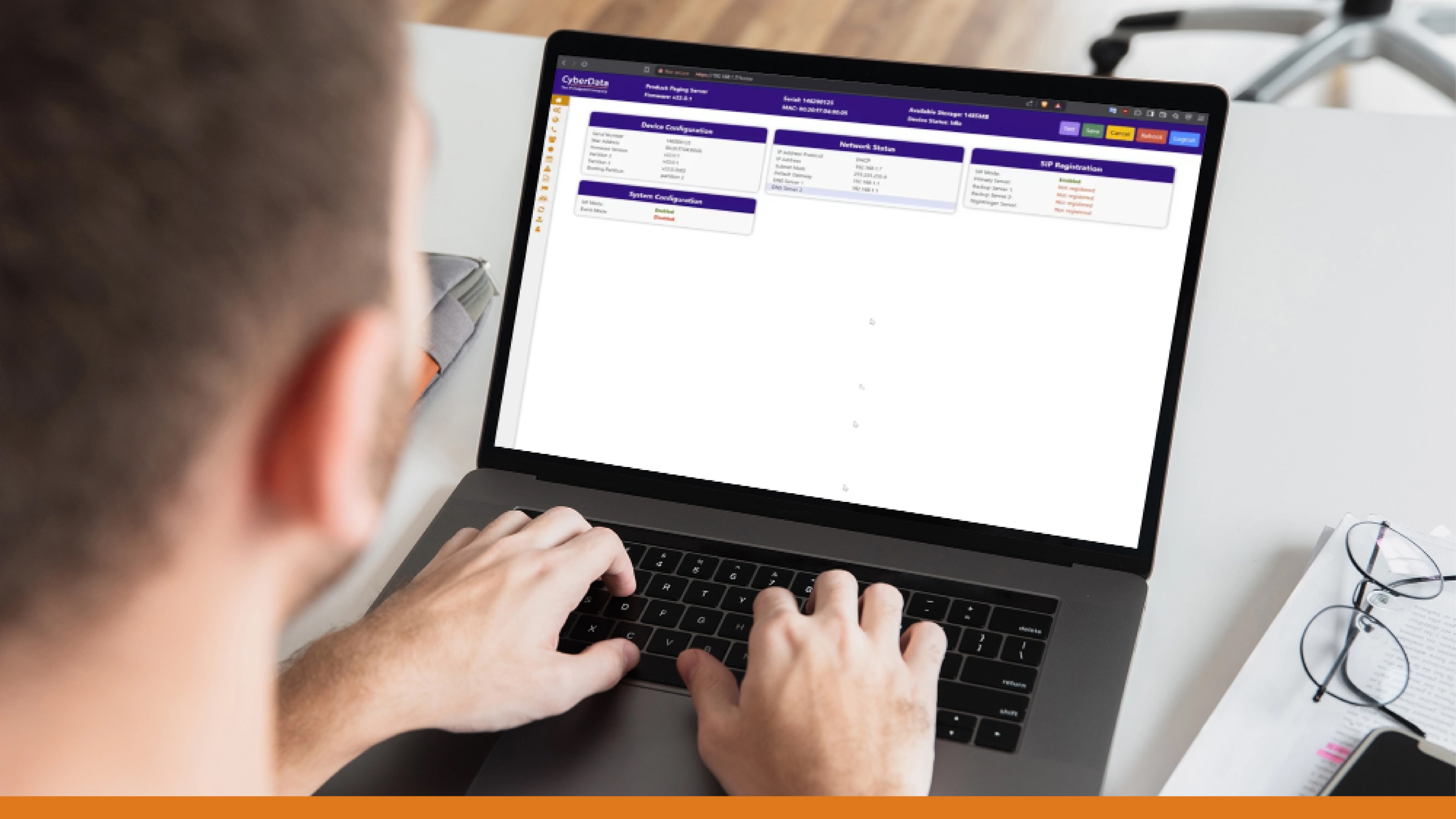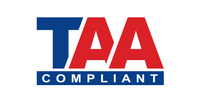The uncomfortable truth: why functionally “good enough” doesn’t equal compliance
If the responsibility for safety and operations lies with you, you should already know that putting a paging intercom system on the wall doesn’t make you compliant. In drills and real incidents, the only thing that matters is that the right people clearly hear the right message everywhere, every time. That’s the standard regulators expect and the standard your teams deserve.
Here’s the catch: either knowingly or unknowingly, most organizations run partially compliant systems. Groups of devices work in some rooms but not others. Completion and status logs are scattered. Then, the current process for updates is when someone remembers. That gap in a repeatable, top-to-bottom process creates risks for an organization across operations and legal, while leaving humans vulnerable.
This guide breaks down what full emergency notification compliance really looks like, where most teams fall short, and how moving to a cloud-first approach helps you close the compliance gap.

What is emergency notification compliance, and why it’s harder than it looks
When you break it down, you’re compliant when your organization can reliably send, receive, and document emergency and routine notifications across all required areas, on time, and with proof.
What this includes:
-
Coverage: All required zones (classrooms, shop floors, loading docks, offices, parking, etc.).
-
Delivery and audibility/visibility: Messages must be intelligible and/or visible where required.
-
Speed and reliability: Alerts reach intended audiences without delay, and emergency notification systems keep working during network hiccups or device failures.
-
Control and documentation: Standardized workflows, role-based access, and detailed logs for audits and after-action review.
-
Maintenance: Proactive device monitoring and timely firmware/config updates.
Emergency compliance can be thought of like a chain. If any link, coverage, clarity, speed, control, or maintenance breaks, the whole chain fails. In emergencies, a 93 percent delivery rate might as well be zero. OSHA’s Employee Standards covers everything from fire detection to emergency plans, but the point is that knowing what’s out there will help in your search for a compliant emergency notification solution. Keep reading because CyberData’s Terminus Cloud Control™ does exactly what you need.

The 3 most common compliance gaps in notification systems
1) Patchwork coverage and incident management
As with most installations, it's common for different buildings, or even hallways, to use different amps, speakers, or paging intercom paths. It’s not because of poor design or planning, but staged rollouts are normal, and expansions happen, so what’s available at the time gets installed. In the end, workflows can vary site by site, so results can, too.
Risk: Inconsistent delivery and no reliable way to prove who received what and when.
2) “Blind spot” alert system maintenance
The reactive approach means you, more often than not, find failures only when someone complains. Without device health and diagnostics, you can’t prevent outages or document preventive actions.
Risk: Higher frequency of missed alerts, safety exposure, and weak audit trails.
3) No single source of truth
A regrettable pitfall of disconnected systems is that when emergency notifications, daily intercom pages, and device updates live in separate tools, or worse, on local hardware, you can’t standardize or properly audit.
Risk: Delayed sending of notifications, conflicting schedules, and fragmented records.

Why cloud-based control in an emergency alert system is now table stakes for notification system compliance
Modern emergency notification compliance is so much more than simply sending an instant alert. It’s about controlling the entire signal path from message templates and zones to device health and firmware from one centralized place. That’s what Terminus Cloud Control™ is built for: a single, browser-based console to send emergency and routine notifications, monitor device status, push updates, and capture the record you’ll need later.
What to look for in a cloud platform that meets emergency communications regulations:
-
Unified emergency + routine messaging: One workflow for lockdowns, severe weather, all-calls, bells, and scheduled announcements.
-
Device visibility and diagnostics: Real-time health alerts, temperature thresholds, connectivity status, and event logs.
-
Fleet management: Remote configuration and firmware updates across groups/sites.
-
Scalability: Manage virtually unlimited endpoints and facilities as you grow.
-
Security: TLS/SRTP, user permissions, and hardening aligned with enterprise practices.

How Terminus Cloud Control™ supports emergency notification compliance
Use this quick checklist to compare your current system against what Terminus offers. If you can answer “yes” to each, you’re already on track.
-
Can authorized users send role-based alerts from a browser to the right zones in seconds?
-
Are device health, status changes, and errors visible in real time, and alerts sent if something's off?
-
Can you standardize schedules and templates across every site, then localize where needed?
-
Can you push firmware/config updates across groups without truck rolls?
-
Do you have auditable logs that show who sent what, where, and when?
If you’re missing any of these, centralizing with Terminus Cloud Control™ can close the gap.

The new standard in business continuity: device visibility, diagnostics, and documentation
Compliance lives or dies on proof. You need to show that systems were functional, alerts were delivered, and follow-up actions were taken. That’s why device-aware platforms matter.
-
Device telemetry: Proactive alerts for status changes and thresholds prevent silent failures.
-
Hybrid paging support: Use existing 25V/70V speakers with the SIP 25V/70V Hybrid Amplifier (011579) while joining IP multicast groups and modern zones.
-
Security and control: HTTPS configuration, TLS 1.2/SRTP, VLAN tagging, and role-based access.
-
Documentation: Centralized sends, device events, and update logs simplify audits.
A familiar compliance standard story, and one you know all too well
A national retailer thought they were set: phones, amps, ceiling speakers. But audits showed some stores missed weather alerts, and one location’s amp shut down unnoticed. After moving to centralized scheduling and device diagnostics, they caught a failing amp before a holiday weekend, avoided downtime, and standardized chainwide promos and safety callouts.
Takeaway: without visibility and centralized control, “most of the time” is not compliant or safe.

Your phased path to emergency notification compliance
1) Start with outcomes, not gear
List your required messages (lockdown, severe weather, all-call, bells) and audiences. Map zones and roles first.
2) Save money and reuse what works; replace what doesn’t
Keep legacy 25V/70V speakers via the SIP 25V/70V Hybrid Amplifier and layer IP endpoints where you need smarter zoning or strobes.
3) Centralize control from day one
Adopt Terminus Cloud Control™ for unified emergency + routine messaging, device health, and updates.
4) Design it right, and with CyberData, it’s free
Upload floor plans to CyberData’s Free Design Services for device placement, BOM with MSRP, and network diagrams—no cost, faster rollouts.
5) Document and train
Lock down your alert templates, permissions, testing cadence, and RMA steps. Standardize records for audits and after-action reviews.
Why CyberData for compliance-focused teams
-
Hardware + cloud, one vendor. Native control of IP endpoints (speakers, intercoms, call/alert buttons) and proactive diagnostics in the same platform.
-
Hybrid migration made simple. Bridge analog and IP with the 25V/70V Hybrid Amplifier, and scale without rip-and-replace.
-
50+ years of innovation, 5-year warranty, US-based engineering, and TAA compliance. Lower lifecycle risk, easier procurement, and long-term confidence.
-
Free design services. Floor plan review, BOM, and network diagrams included.
First time hearing about the brand? Welcome and meet CyberData.

Compliance is foundational to a system, not an add-on to purchase
Emergency notification compliance isn’t a box you check; it’s a living system you manage. The safest, simplest path is to centralize how you send alerts, monitor devices, and document it all. That’s exactly what Terminus Cloud Control™ delivers, backed by hybrid hardware, a 5-year warranty, and free design help.
Take some time to inventory your system using the checklist above. If you find gaps or want a second set of eyes, contact us. We’ll scope your sites, align to your compliance needs, and help you plan a phased rollout that’s safe, documented, and future ready.


